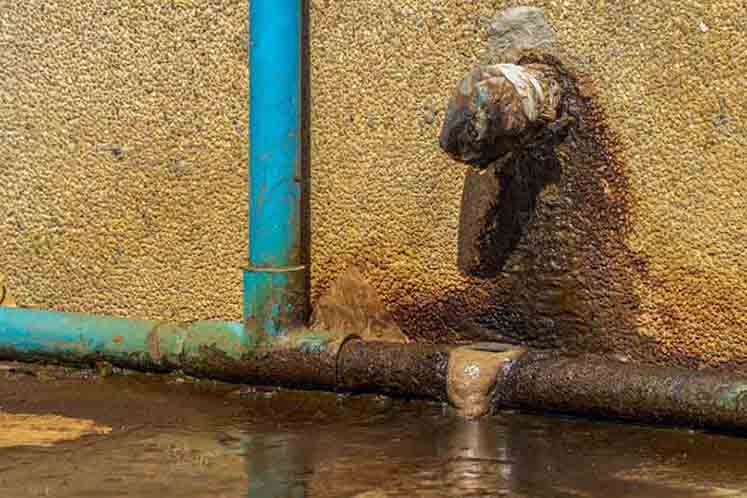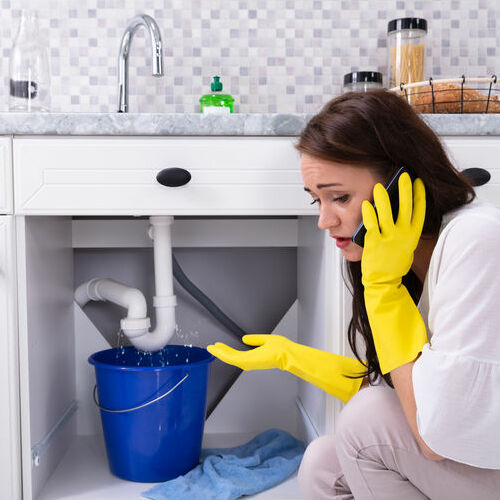Tips to Dealing with Plumbing Problems in Older Homes
Tips to Dealing with Plumbing Problems in Older Homes
Blog Article
How do you really feel in relation to Common Plumbing Problems in Older Homes?

Older homes typically come with beauty, character, and history, yet they can likewise bring a host of plumbing problems. Whether you're dealing with maturing pipes, low water stress, or leaks, recognizing how to resolve these typical troubles is critical to preserving a safe and practical home. In this guide, we'll check out the typical plumbing obstacles encountered by older homes and offer sensible services to maintain your plumbing in top form.
Comprehending Common Pipes Concerns
Aging Pipes
Among one of the most common problems in older homes is maturing pipes. Depending upon the age in which your home was developed, the pipelines could be made from materials that have weakened gradually, such as galvanized steel, cast iron, or even lead. These materials can rust, come to be weak, or establish leakages, causing water damages and possible carcinogen.
Water Quality Testing
Older pipes can affect the high quality of your water. Conduct a water high quality examination to look for impurities such as lead, corrosion, or various other contaminations that may be presented by aging pipelines.
Solutions for Typical Pipes Problems
Replacing Aging Pipes
If your home has old, degrading pipelines, take into consideration changing them with modern-day products like copper or PEX. This can be a substantial investment, however it will certainly stop future problems and enhance the safety and security and integrity of your pipes system.
Fixing Low Water Pressure
To repair low water pressure, start by cleaning or changing old components and getting rid of mineral build-up in the pipelines. If the issue continues, it may be needed to replace sections of rusty pipes.
Repairing and Replacing Dripping Pipes
For little leakages, you can make use of pipeline clamps or epoxy putty as a short-lived fix. Nevertheless, it's finest to replace leaking pipes entirely to avoid further damage.
Upgrading Components
Updating old components to modern-day, water-efficient designs can enhance your home's pipes efficiency and decrease water intake. Try to find fixtures with the WaterSense tag for the very best effectiveness.
Handling Pipe Corrosion
If your pipelines are worn away, changing them with corrosion-resistant products like copper, PVC, or PEX is the very best service. Regular inspections and water quality maintenance can assist avoid additionally deterioration.
Low Tide Pressure
If you're experiencing low tide pressure, it could be due to natural resources, rust inside the pipes, or old components that are no longer operating effectively. This can be a significant inconvenience, specifically in areas like showers and sinks.
Leaking Pipelines
Leaks are an additional regular issue in older homes, usually triggered by corroded or damaged pipes. Also small leakages can cause significant water damages, mold development, and increased water costs if not attended to without delay.
Out-of-date Fixtures
Out-of-date plumbing fixtures such as taps, toilets, and showerheads not just look old however might likewise be much less efficient, vulnerable to leaks, or inappropriate with modern pipes requirements.
Pipeline Corrosion
Deterioration is a common trouble in older pipes, specifically those made from galvanized steel or cast iron. Rusty pipelines can restrict water circulation, create staining, and eventually cause leakages or pipeline ruptureds.
Analyzing the Problem of Your Plumbing
Inspecting Visible Pipelines
Beginning by examining any type of noticeable pipes in your house, such as those in cellars, crawl spaces, or under sinks. Search for indications of deterioration, leaks, or rust, which can suggest underlying issues.
Checking for Leakages
Look for leakages by examining areas around taps, commodes, and under sinks. You can likewise check your water meter prior to and after a duration of no water use to discover surprise leakages.
When to Call a Professional
While some pipes concerns can be taken care of with DIY services, there are times when it's finest to employ a specialist. If you're dealing with significant leakages, considerable corrosion, or are unclear concerning the problem of your pipes, a certified plumbing can provide expert assessment and repair work.
Preventive Maintenance Tips
Routine Evaluations
Frequently check your plumbing system for indications of deterioration. Capturing concerns early can protect against costly repair work down the line.
Water Pressure Policy
Guarantee your water stress is within the advised variety to prevent stressing your pipes and components. A plumber can install a stress regulatory authority if required.
Water High Quality Maintenance
Mount water filters or conditioners if your water high quality is poor. This can secure your pipes and fixtures from damage brought on by difficult water or contaminants.
Proactive Pipeline Substitute
If your home has very old pipes, consider aggressive substitute before major problems arise. This can conserve you from emergency situation repair work and water damage.
Conclusion
Dealing with plumbing problems in older homes requires a mix of vigilance, preventive maintenance, and timely upgrades. By recognizing the usual difficulties and recognizing when to look for professional assistance, you can guarantee your plumbing system remains useful and dependable for years ahead.
Common Plumbing Issues in Older Homes and How to Fix Them
Owning an older home in Australia comes with its unique charm and a set of challenges, especially when it comes to plumbing. The Sunshine Coast has many older properties that can harbour plumbing problems that aren t just inconvenient but potentially costly. Here s a look at some common plumbing issues in older homes and expert advice on how to handle them.
Outdated Piping Materials
Many older homes were built with galvanised steel, cast iron, or even lead pipes, materials that are far from ideal by today s standards. Galvanised pipes are prone to corrosion and clogging, while lead pipes pose serious health risks.
How to Fix:
Replacing old pipes is a job for a professional. Upgrading to copper or PVC piping not only enhances water quality and flow but also increases the property s safety and value. If you suspect your home has outdated materials, a licensed plumber can conduct a thorough inspection and recommend the best course of action.
Corrosion and Pipe Degradation
Over time, exposure to water and minerals can cause pipes to corrode, leading to leaks, bursts, and water contamination. Corrosion is especially common in homes over 50 years old.
How to Fix:
Regular inspections can catch early signs of corrosion. If corrosion is found, the affected section of piping often needs to be replaced. For homes with extensive corrosion, a complete plumbing overhaul might be necessary. It s crucial to consult with a plumbing expert to understand the extent of the issue.
Tree Root Intrusion
Older neighbourhoods usually have mature trees whose roots can intrude into pipe lines, causing blockages or damage. This is particularly problematic for sewer lines, where roots seek out water sources.
How to Fix:
A plumber can use a specialised camera to inspect sewer lines for root intrusion. If roots are a problem, methods like root cutting or hydro-jetting can clear the obstruction. In severe cases, part of the pipe may need replacing. Consider root barriers around the piping to prevent future issues.
Inadequate Water Pressure
Low water pressure in older homes can be due to various factors, including corroded water lines, sediment build-up in pipes, or outdated fixtures.
How to Fix:
First, check if the low pressure is isolated to one area or throughout the house. Replacing old fixtures can sometimes resolve the issue. However, if the problem is more widespread, it might be due to sediment or corrosion. Flushing the system or replacing the affected pipes usually restores normal pressure. Again, a professional assessment is advisable.
Outdated Fixtures
Older homes often feature fixtures that are not only visually dated but functionally inefficient. This includes everything from toilets and taps to showerheads and washing machine hoses.
How to Fix:
Updating these fixtures can improve both water efficiency and the aesthetic appeal of your home. Modern fixtures are designed to conserve water, which can significantly reduce your water bill and lessen your environmental impact.
Conclusion
Maintaining the plumbing in an older home requires a proactive approach. Regular checks and updates are key to preserving these beautiful properties. If you re facing plumbing issues in your older home, it s best to call on experienced professionals like Green & Gold Plumbing & Gas. With the right expertise, even the most daunting plumbing problems can be resolved, ensuring that your home s character is maintained while its functionality is enhanced.
https://gandgplumbing.com.au/common-plumbing-issues-in-older-homes-and-how-to-fix-them/

Do you really like reading up on ? Create feedback down the page. We would be happy to hear your suggestions about this posting. Hoping that you visit us again before long. Are you aware of anybody else who is very much interested in ? Take a moment to promote it. Many thanks for being here. Kindly pay a visit to our site back soon.
Call Today Report this page